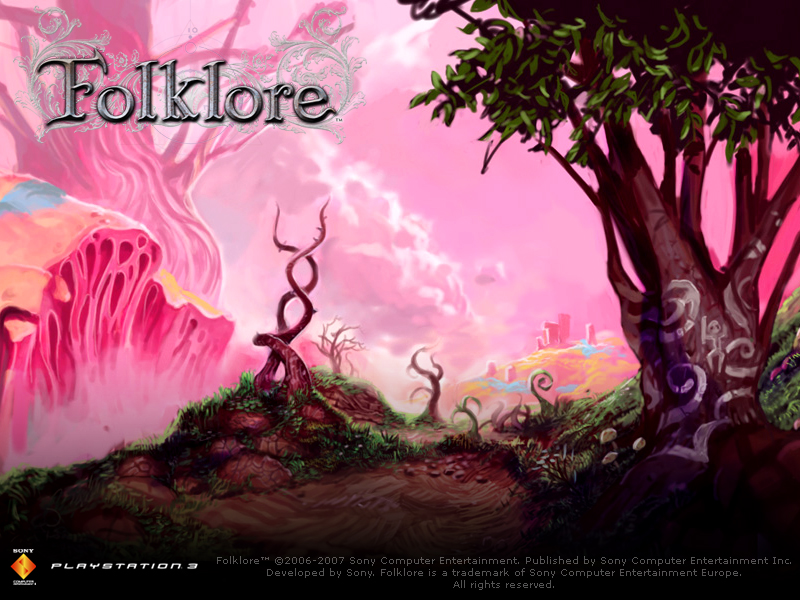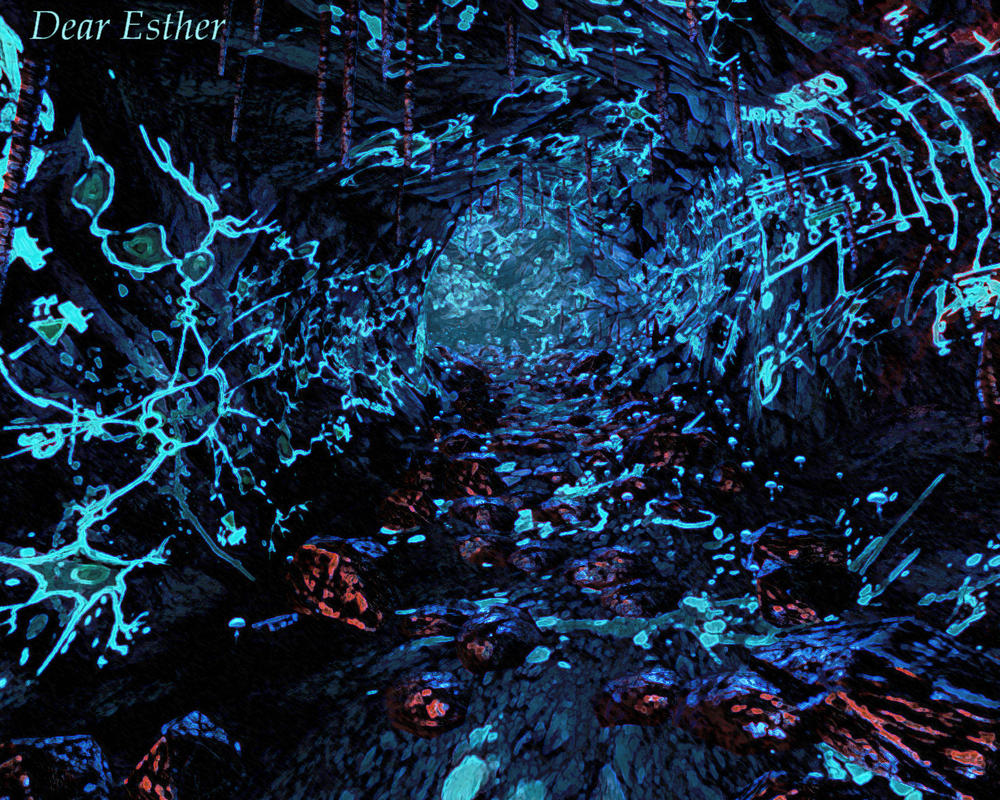As was discussed in the lecture on Tuesday, there is, at
present, a trend across mainstream gaming towards more ‘realistic’ level
design. Not realistic in terms of subject matter—space marines and
super-soldier projects are the go-to for any company looking to make a quick
profit, after all—but in terms of style. It’s hard to find a popular game that doesn’t
take place solely in grim villages, dark alleys, and shining steel corridors—or
maybe the occasional desert, if you’re lucky. In the monochromatic environments
that have become so standardised, it starts to become almost novel to see a
flash of colour and surrealism. These flashes take the form of games such as Folklore, Psychonauts, and Dear Esther—each
utilising their colourful settings to stand out from the drab crowd.
Folklore is a game
set in Ireland, where a journalist named Keats and an illustrator named Ellen
find their way into the Netherworld. This Netherwold is separated into a variety
of smaller ‘netherworld realms’, which are depicted in different ways and form
the levels of the game. The first—and arguably the most spectacular—is the
Faery Realm, a technicolour forest home to both the spirits of the dead, and a
selection of Irish faeries, or ‘fair folk’.
In Psychonauts,
which was mentioned briefly in Tuesday’s lecture, you play a psychic boy, Razputin,
as he dives into the mind of the other game characters—one such mind being the
mind of Edgar Teglee, a tortured artist, whose subconscious, ‘Black
Velvetopia’, takes the form of a black and neon city, full of references to
luchador wrestling and covered in beautiful patterns.
Dear Esther is the
story of an unnamed man trying to reconcile with the death of his wife, Esther,
as he traverses an island in the Hebrides. The island is full of lush scenery,
most notably a network of caves, which are bathed in otherworldly light, and
covered in glowing blue paintings of atomic symbols.
However, despite the spectacular and varied environments of all three
games, there are still elements of conventional level design in each. Folklore features a desolate world named
Warcadia, which as the name implies, takes place in a bombed-out city; Psychonauts begins its tutorial level, Basic
Braining, in an army-themed setting; Dear
Esther dots its floral fields with rickety shacks and shipwrecks.
Is the choice to add war, destruction and desolation—themes
gaming and gamers often equate to ‘realism’—to these otherwise surreal games a necessary one?
Is it simply impossible to create a mainstream game now without tying it into
these themes and settings—and if so, why? Is it because the world feels games
need to be tied in with our present time, and all the industrialisation and
destruction in it, or is it because players simply have an expectation that
these things will appear? To those who have played these games—I’m aware that
these elements all factor into the plot of their matching game, but with a
little innovation, perhaps they could have been avoided?



This may be a dumb question, but are these all games played on the PC??
ReplyDeletePsychonauts is available for PC, Xbox and PS2, Dear Esther is PC only, and Folklore is for PS3.
DeleteOn that note, if you or anyone else is interested in playing these, Psychonauts and Dear Esther are about $10 each on Steam; so they're easy to get copies of. Folklore can be ordered online for about $50 or so, just check Ebay or the like.
(Psychonauts is one of the best games I've ever played, and I highly recommend it to anyone who likes offbeat humor and weird art design!)